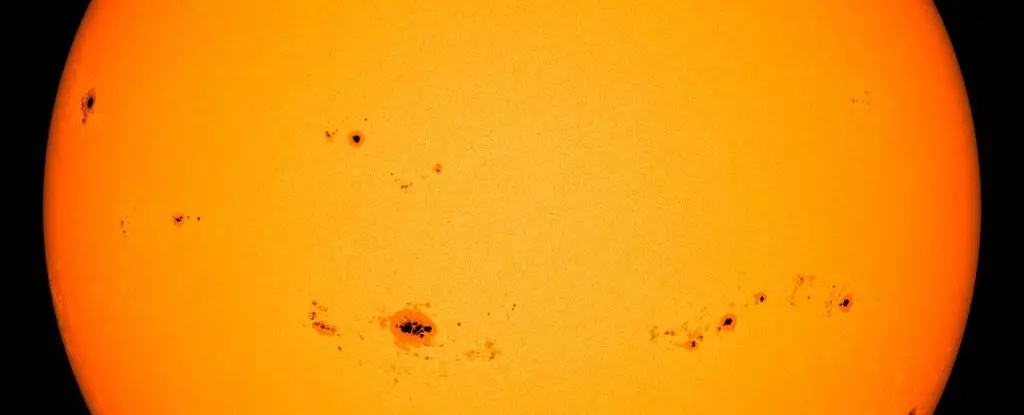As the solar system spins ever onward, an exciting chapter has begun: NASA, along with the National Oceanic and Atmospheric Administration (NOAA) and the Solar Cycle Prediction Panel, has announced the onset of solar maximum. This period is marked by an uptick in solar activity, as our Sun reaches the zenith of its 11-year cycle. During this time, the cosmos is treated to a spectacle of sunspots, solar flares, and coronal mass ejections (CMEs), phenomena that not only dazzle with their beauty but also present a distinct set of challenges and opportunities for life on Earth.
The solar maximum is part of an extensive rhythm that governs solar behavior, culminating in a barrage of energetic events. However, while we can observe the state of solar activity now, pinpointing the exact moment of peak intensity remains a guessing game, as noted by NOAA meteorologist Elsayed Talaat. This ambiguity speaks to the complexities involved in examining solar phenomena and highlights a critical understanding: the most active period may not yet be upon us, even as solar maximum unfolds.
One striking characteristic of solar cycles is their unpredictability. Despite a general consensus that solar activity completes a full cycle every eleven years or so, there is significant variation in both the duration and intensity of these cycles. Scientists have yet to definitively explain the driving forces behind these cycles, often referring to the intricate solar dynamo effect—the mechanism responsible for generating the Sun’s magnetic fields—as a “black box” of astrophysical mystery. The inability to predict these cycles with accuracy underscores a broader challenge within astrophysics.
Michael Wheatland, a solar astrophysicist from the University of Sydney, reiterates this point: we remain in the dark about many underlying dynamics that dictate solar activity. The concept of sunspots serves as a primary indicator of solar cycle phases, as they represent regions where magnetic fields are temporarily strengthened, leading to visually darker patches on the Sun’s surface. Solar minimum, characterized by a scarcity of sunspots, gives way to solar maximum, where the Sun can appear freckled, threatening to unleash solar outbursts.
What does solar maximum mean for Earth? The Sun’s external behavior has a tangible connection to our planet’s environments, necessitating close scrutiny of its solar flares and CMEs. Solar flares are released when the magnetic fields in sunspots become unstable, resulting in dramatic eruptions that emit powerful bursts of radiation. When the energetic particles from these flares collide with Earth’s magnetic field, they can lead to geomagnetic storms which, while visually enchanting in the form of auroras, can wreak havoc on technology. These disturbances can induce currents that threaten power grids, disrupt communications, and interfere with navigation systems.
While the current cycle is proving to be more vigorous than initially anticipated, it remains within the realm of expectation for a solar cycle. The most powerful flare recorded to date during this cycle was an impressive X9.0 event that occurred on October 4, a reminder of the raw power the Sun can unleash. Nevertheless, it is crucial to recognize that this kind of flare, while notable, is a mere sample from a collection of past events, indicating that stronger storms have occurred, emphasizing an evolutionary aspect to our solar understanding.
Interestingly enough, this solar maximum may yield new knowledge that can refine our understanding of solar cycles. Although predictions made by some experts fell short of the overall observed activity, there are researchers whose forecasts aligned more closely with the observed reality. This disparity invites a reevaluation of our solar models and forecasting methodologies, potentially paving the way for enhanced predictive capabilities in the future.
The pathway ahead is undoubtedly tumultuous, filled with celestial fireworks and opportunities for significant scientific discovery. As we navigate through this phase of increased solar activity, keeping abreast of developments from both astronomical and meteorological spheres will be paramount.
As we embrace solar maximum, we are reminded of the intricate relationship between our Sun’s behavior and life on Earth. While the challenges posed by solar phenomena are non-negligible, they also open corridors for learning—both about our universe and the solar forces that govern it. Strap in and watch the skies; the show has just begun!


Leave a Reply